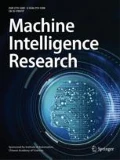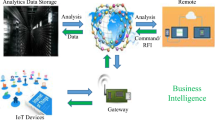Abstract
Due to the complexity of modern industrial systems, a conventional automation system is not capable of providing sufficient information management and high-level intelligent approaches, as achieving these functionalities requires the support of comprehensive data management and coordination between system devices and heterogenous information. This paper proposes the concept of e-Automation, in which computer networking and distributed intelligence agent technologies are applied to industrial automation systems, and presents a hardware and software architecture that implements this concept. An open infrastructure based on multi-agent systems is employed in the proposed architecture of e-Automation, which aims to allow the implementation of diverse tasks and to permit greater configurability than can be obtained from a traditional system. To evaluate our proposed e-Automation concept, this paper presents a case study of substation information management which adopts the proposed e-Automation architecture in power system domain.
Similar content being viewed by others
References
T. Skeie, S. Johannessen, C. Brunner, Ethernet in substation automation, IEEE Control Systems Magazine, vol. 22, no. 3, pp. 43–51, 2002.
R. Tsukui, P. Beaumont, T. Tanaka, K. Sekiguchi, Power system protection and control using intranet technology, IEE Power Engineering Journal, vol. 15, no. 5, pp. 249–255, 2001.
T. E. Dy-Liacco, Modern control centers and computer networking, IEEE Computer Applications in Power, vol. 7, no. 4, pp. 17–22, Oct 1994.
Q. Zhao, G. Huang, X. W. Wu, X. C. Luo, Software architecture for power market supporting system and reengineering of legacy ems, Transactions on Power Systems, vol. 18, no. 1, pp. 191–197, 2003.
E. E. Mangina, S. D. J. McArthur, J. R. McDonald, COMMAS (Condition Monitoring MultiAgent System), Autonomous Agents and Multi-Agent Systems, vol. 18, no. 1, pp. 191–197, 2001.
H. Van Dyke Parunak, Industrial and practical applications of DAI, Multiagent Systems: A Modern Approach to Distributed Artificial Intelligence, Cerhard Weiss, editor, The MIP Press, Cambridge, Massachusetts, pp. 377–421, 1999.
W. M. Shen, D. H. Norrie, Agent-based systems for intelligent manufacturing: a state-of-the-art survey, Knowledge and Information Systems, vol. 1, no. 2, pp. 129–159, 1999.
Foundation for intelligent physical agents, FIPA agent management specification, http://www.fipa.org/specs/fipa00023/, August 2000.
K. Sucara, K. Decker, A. Pannu, M. Williamson, D. Zeng, Distributed intelligent agents, IEEE Expert, vol. 11, no. 6, pp. 36–46, December 1996.
Author information
Authors and Affiliations
Corresponding author
Additional information
The work was supported by The National Grid Company plc, UK.
Q. H. Wu obtained an M.Sc.(Eng) degree in Electrical Engineering from Huazhong University of Science and Technology (HUST) in 1981. From 1981 to 1984, he was appointed Lecturer in Electrical Engineering in the University. He obtained a Ph.D. degree from The Queen’s University of Belfast (QUB) in 1987. He worked as a Research Fellow and Senior Research Fellow in QUB from 1987 to 1991 and Lecturer and Senior Lecturer in the Department of Mathematical Sciences, Loughborough University, U.K. from 1991 to 1995. He was appointed to the Chair of Electrical Engineering in 1995, leading the Intelligence Engineering And Automation group at The University of Liverpool. Professor Wu is a Chartered Engineer, Fellow of IEE and Senior Member of IEEE. His research interests include Adaptive Control, Neural Networks, Evolutionary Computation, Biocomputation, Multi-agent Systems and Power System Operation and Control.
D. P. Buse obtained a first-class honours B.Sc. degree in Computer Science from the Department of Computer Science, the University of Liverpool, U.K. in July 2000. Currently he is a PhD student in the Department of Electrical Engineering and Electronics, The University of Liverpool. His research interests include mobile agents, multi-agent systems and their industrial applications.
J. Q. Feng obtained a BEng degree in Engineering from ShenZhen University, China, in July 1998. From 2000 to 2001, he worked as a R&D manager in an IT company, Shenzhen. Currently he is a PhD student in the Department of Electrical Engineering and Electronics, The University of Liverpool, U.K. His research interests include distributed computation, mobile agents, multi-agent systems and their industrial applications.
P. Sun obtained his PhD degree from the Department of Electrical Engineering and Electronics, The University of Liverpool, U.K. He works currently as a Postdoctoral Research Assistant in the Department. His research interests include mathematical morphology, ECG analysis, electronic design automation, power system and industrial automation.
J. Fitch is the substation policy application team leader within National Grid Asset Strategy, part of National Grid Transco. His team is responsible for both the technical specification and assessment of all substation HV and LV equipment, as well as providing strategic direction and application policy. With National Grid, he has worked in a number of areas, including substation control and automation and demanding and new substation build projects. His particular interests are substation automation, functional integration, and telecontrol protocols. He received a first class honors degree in electrical and electronic engineering from Surrey University and is member of the IEE. He is a U.K. utility representative on the BSI PEL57 and Cigré Working Group 36-16.
Rights and permissions
About this article
Cite this article
Wu, Q.H., Buse, D.P., Feng, J.Q. et al. e-Automation, an architecture for distributed industrial automation systems. Int J Automat Comput 1, 17–25 (2004). https://doi.org/10.1007/s11633-004-0017-6
Received:
Revised:
Issue Date:
DOI: https://doi.org/10.1007/s11633-004-0017-6




